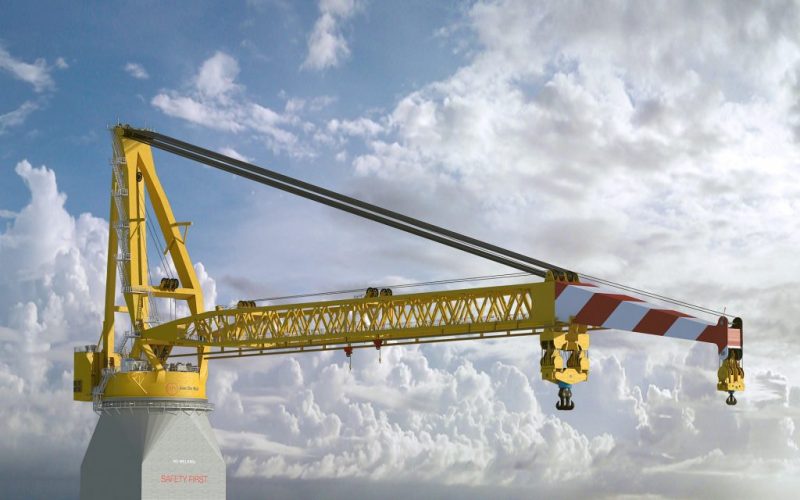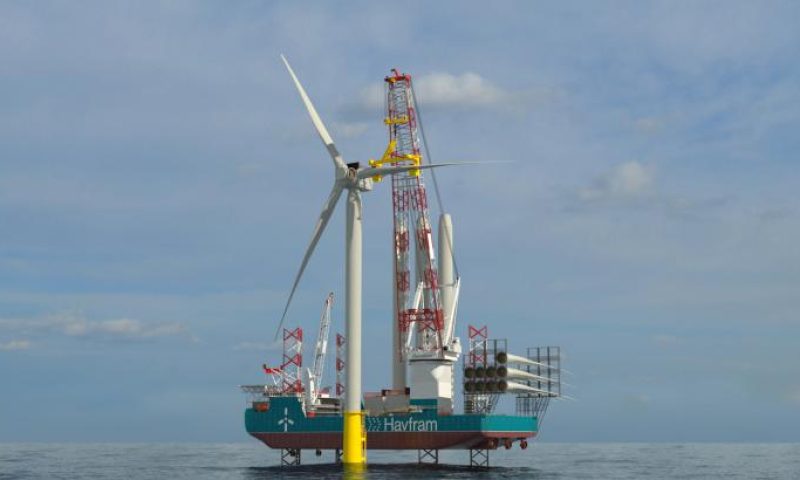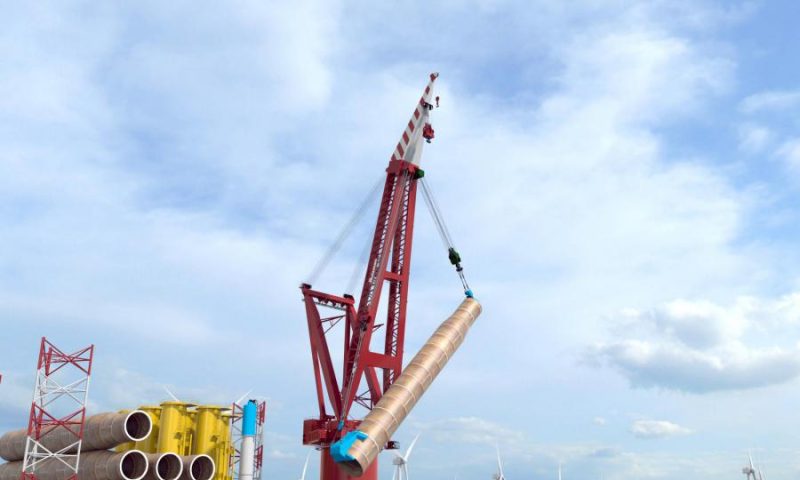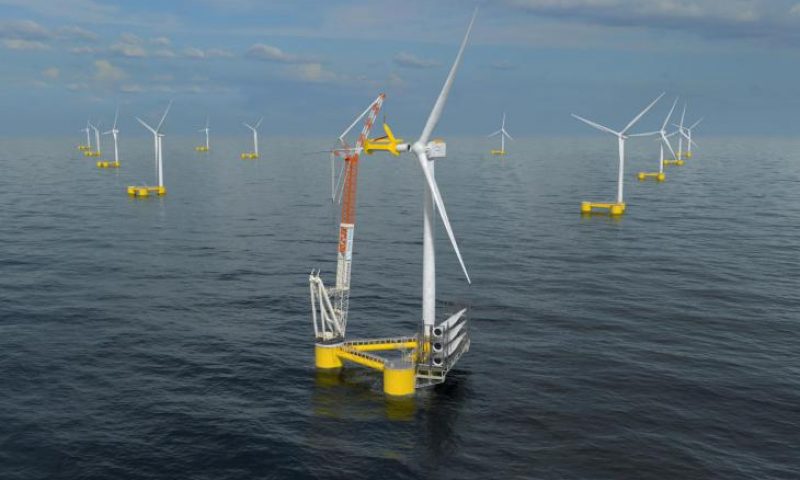
Jan De Nul Group’s Super-Sizes Floating Installation Crane Vessel
Jan De Nul Group has ordered Les Alizés, a floating installation crane vessel from the CMHI Haimen shipyard in China. Just six months earlier, the company ordered offshore installation vessel Voltaire. With a 5000-metric-tonne Huisman crane, it surpasses the 3000-metric-tonne record that would be set by the Voltaire.
Together with the Voltaire, this new vessel will be in a super-size class of its own, capable of building the newest generation of offshore wind farms. Les Alizés will be ready in 2022.
This vessel investment is a response to the global trend within the offshore wind energy sector to design and install increasingly larger wind turbines. This new generation of turbine can be more than 270 metres high, with blades up to 120 metres long and sit on foundations up to 2500 tonnes.
Floating Crane Vessel
Les Alizés will mainly be used for the construction of offshore wind farms, but is also suitable for decommissioning offshore oil and gas platforms. Unlike the Voltaire, Les Alizés does not have four legs to lift itself above the sea surface. It is a floating crane vessel, which means that the vessel is not dependent on water depths and seabed conditions. This allows the vessel to install heavier and larger foundations into deeper waters and in more challenging seabed conditions. Les Alizés is equipped with a high-performance DP2 system.
Largest Offshore Crane on a Monohull Vessel
Les Alizés is specifically designed for loading, transporting, lifting and installing offshore wind turbine foundations. The main features are a main crane of 5000 tonnes, a deck loading capacity of 61,000 tonnes and a deck space of 9300 square metres. With these characteristics, Les Alizés can easily transport the heavier future foundations, several in one trip, to the offshore installation site, with direct benefits in planning, fuel consumption and emissions reduction.
The 5000-metric-tonne Tub Mounted Crane (TMC) will be the largest offshore wind turbine foundation installation crane installed on a monohull vessel and will be supplied by Huisman. Similar to the +3000-metric-tonne Leg Encircling Crane which Huisman contracted for the Voltaire earlier this year, this crane will be unique in its class.

The 5000-metric-tonne TMC is designed to allow operations with both main hoist and auxiliary hoist in extreme weather conditions and the crane is outfitted with Huisman’s Dual Main Hoist System for easy upending of large structures.
The TMC is outfitted with a large number of specific innovative features such as:
- Huisman’s segmented slew bearing
- Fully electric drive system
- Comprehensive workability improvement solutions
- Bridge passage system
- Crane automation package to allow for more efficient operations
- Preparations for future crane upgrades
Dual Exhaust Filter System
The latest generation of Jan De Nul’s vessels is equipped with an exhaust gas filtering technology that complies with the strict European Euro Stage V guidelines for emissions on land and inland waterways. So it will be for Les Alizés.
The highly advanced dual exhaust filter system removes up to 99 per cent of nanoparticles from emissions using a diesel particulate filter (DPF) followed by selective catalytic reduction system (SCR) for NOx removal.
As a result of these exhaust filtering systems, Les Alizés and the Voltaire will be the first seaworthy installation vessels in the world with extremely low emissions (Ultra-Low Emission Vessel or ULEv for short) and with EURO STAGE V certification (ULEv notation).
Les Alizés will also have a Cleanship NDO7 label and a Green Passport EU label. The Cleanship label confirms that the vessel checks and minimizes the waste water and all other residual waste. The second Green Passport label means that all materials and hazardous substances are mapped out during the construction phase, in order to facilitate the recycling of the vessel when decommissioning.
Les Alizés
The Offshore Installation Crane Vessel is named after the French word “alizé”, which means “trade wind”. Trade winds are regular winds in the intertropical regions (between 23°27 north and 23°27 south), blowing from east to west.
Green Loan
On 5 July 2019, Jan De Nul Group concluded an agreement for a green loan with a consortium of five banks, led by KBC Bank, for the financing of both investments. The consortium of five banks consists of KBC Bank, BNP Paribas Fortis, ING Luxembourg, Rabobank and Belfius Bank.
Philippe Hutse, Offshore Director at Jan De Nul Group, explains: ‘Similar to the Voltaire, we have financed this investment by means of a green loan thanks to the green emissions reduction technology on board the vessel. During the design phase, as is the case for all our new vessels, we studied very carefully the environmental impact and the solutions to minimize that impact.’
For Jan De Nul Group this is the first green loan, and for KBC it is the first syndicated green loan within the shipping sector. A green loan should be used in its entirety to finance green projects.













